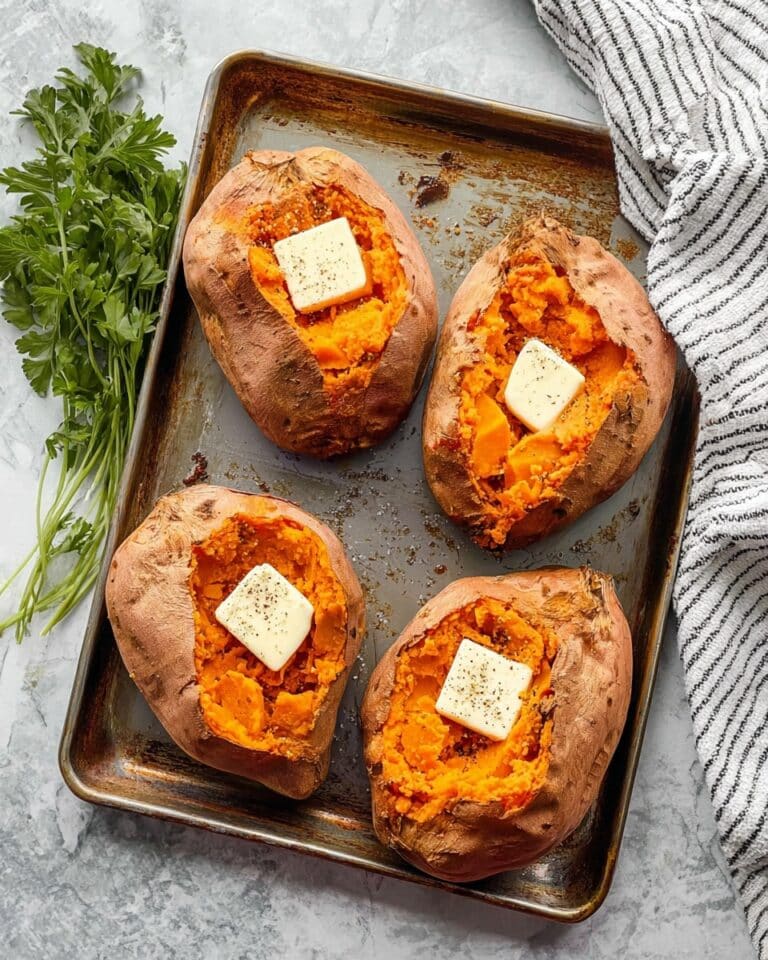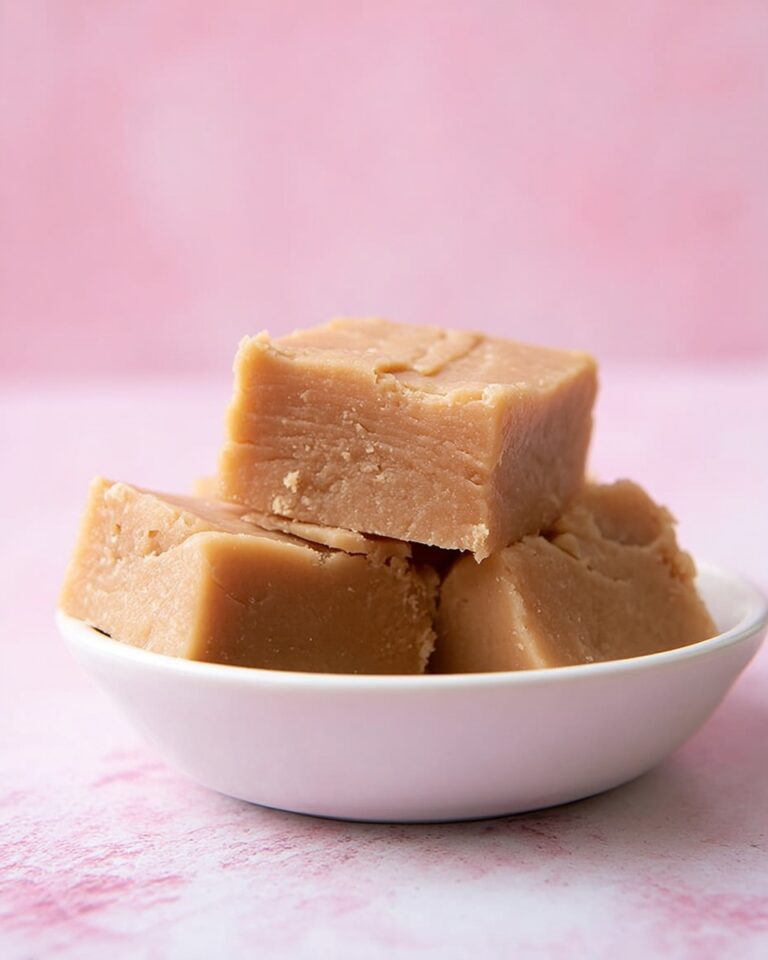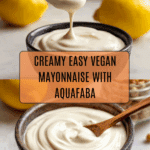Easy Vegan Mayonnaise (With Aquafaba) Recipe
Introduction
This easy vegan mayonnaise uses aquafaba—the liquid from canned chickpeas—to create a light, creamy, and dairy-free mayo. It’s perfect for those seeking a plant-based alternative without sacrificing the classic tang and texture of traditional mayonnaise.

Ingredients
- 3 tablespoons (45ml) liquid from 1 can of chickpeas
- 12 whole chickpeas (about 1/2 ounce; 16 g)
- 2 teaspoons (10 ml) Dijon mustard
- 1 teaspoon (5 ml) fresh lemon juice (from 1 lemon)
- 1 to 2 medium cloves garlic (5 to 10g), minced
- 1/2 cup (120 ml) vegetable oil
- Kosher salt, to taste
- Freshly ground black pepper, to taste
Instructions
- Step 1: In a tall container just large enough for your immersion blender, combine the chickpea liquid, chickpeas, Dijon mustard, lemon juice, and minced garlic. Blend on high speed until completely smooth, about 1 to 2 minutes, stopping to scrape down the sides as necessary. Alternatively, you can blend these ingredients in a 5-cup countertop blender.
- Step 2: With the blender running on high, slowly drizzle in the vegetable oil in a very thin stream or a few drops at a time. Continue blending until the mixture forms a smooth, creamy emulsion, about 3 to 4 minutes total. If using a standard blender, you may need to blend an additional 1 to 2 minutes for full emulsification.
- Step 3: Use a rubber spatula to transfer the mayonnaise to a bowl. Season generously with kosher salt and freshly ground black pepper to taste.
Tips & Variations
- For a milder flavor, reduce the amount of garlic or omit it entirely.
- Try using different oils such as light olive oil or avocado oil for a unique taste.
- If you prefer a thinner consistency, add a small amount of water or aquafaba while blending.
- Use fresh lemon juice for the best brightness and flavor.
Storage
Store the vegan mayonnaise in an airtight container in the refrigerator for up to one week. Before using, stir well in case it has separated slightly. It is best served chilled but can be brought to room temperature for easier spreading.
How to Serve

Serve this delicious recipe with your favorite sides.
FAQs
Can I use liquid from other beans instead of chickpeas?
Chickpea aquafaba is the most reliable for emulsifying due to its protein and starch content. Other beans’ liquid may not produce the same creamy texture or stability.
Is this mayonnaise safe for people with soy allergies?
Yes, this recipe contains no soy. The main ingredients are chickpea liquid, oil, and seasonings, making it suitable for soy-free diets.
PrintEasy Vegan Mayonnaise (With Aquafaba) Recipe
A simple and delightful vegan mayonnaise recipe using aquafaba—the liquid from canned chickpeas—as an egg substitute. This easy-to-make mayo is creamy, tangy, and perfect for those seeking an egg-free, plant-based alternative to traditional mayonnaise.
- Prep Time: 5 minutes
- Cook Time: 0 minutes
- Total Time: 5 minutes
- Yield: About 3/4 cup (180 ml) vegan mayonnaise 1x
- Category: Condiment
- Method: Blending
- Cuisine: Vegan, Plant-Based
- Diet: Vegan
Ingredients
Vegan Mayonnaise Ingredients
- 3 tablespoons (45 ml) liquid from 1 can of chickpeas
- 12 whole chickpeas (about 1/2 ounce; 16 g)
- 2 teaspoons (10 ml) Dijon mustard
- 1 teaspoon (5 ml) fresh juice from 1 lemon
- 1 to 2 medium cloves garlic (5 to 10 g), minced
- 1/2 cup (120 ml) vegetable oil
- Kosher salt, to taste
- Freshly ground black pepper, to taste
Instructions
- Combine Ingredients: In a tall container just large enough to fit the head of an immersion blender, add the chickpea liquid, whole chickpeas, Dijon mustard, fresh lemon juice, and minced garlic. Ensure all ingredients are ready for blending.
- Blend Initial Mixture: Blend at high speed using an immersion blender for 1 to 2 minutes until the mixture is completely smooth, scraping down the sides as necessary. Alternatively, use a standard 5-cup countertop blender to achieve the same smooth consistency.
- Emulsify with Oil: With the blender running at high speed, slowly add the vegetable oil in a very thin stream—just a few drops at a time. Continue this gradual addition for about 3 to 4 minutes total, until a smooth and creamy emulsion forms.
- Final Blending: If using a countertop blender, process the mixture for an additional 1 to 2 minutes on high speed to fully emulsify the mayonnaise.
- Season and Serve: Transfer the mayonnaise to a bowl using a rubber spatula. Season with kosher salt and freshly ground black pepper to taste. Stir well before serving or storing.
Notes
- For best results, add the oil very slowly to ensure proper emulsification and a creamy texture.
- You can adjust the amount of garlic depending on your preference for garlicky flavor.
- This vegan mayo can be stored in an airtight container in the refrigerator for up to one week.
- Use neutral oils like vegetable, canola, or sunflower oil to keep the flavor light and balanced.
- If you don’t have an immersion blender, a high-speed countertop blender works just as well.
Keywords: vegan mayonnaise, aquafaba mayo, egg-free mayo, plant-based condiment, chickpea mayo, easy vegan condiments








